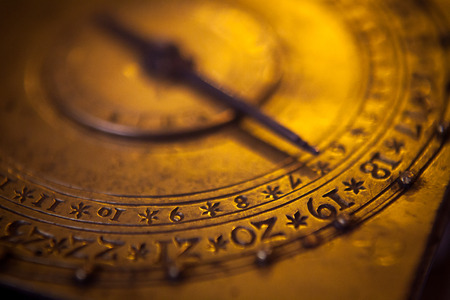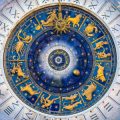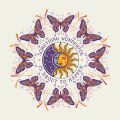Introduction to Vedic Kundli and Its Cultural Significance
Vedic Kundli, also known as Janam Kundali or birth chart, is the cornerstone of Vedic astrology—a tradition deeply woven into the fabric of Indian culture. Rooted in ancient scriptures like the Vedas and Puranas, the Kundli is a celestial map drawn at the exact moment and place of an individuals birth. In India, this chart is more than just a tool for astrological analysis; it is regarded as a sacred guide influencing major life decisions such as marriage, career, and even health. Families often consult astrologers to prepare a childs Janampatri soon after birth, believing that planetary positions (Grahas), zodiac signs (Rashis), and houses (Bhavas) recorded in the Kundli hold clues to one’s destiny. Commonly used terms include Lagna (Ascendant), Nakshatra (constellation), and Dasha (planetary periods), all of which are integral to understanding an individual’s path in life. This pervasive belief system shapes rituals, festivals, and daily practices across communities, reflecting a collective trust in the cosmic rhythm outlined by the Kundli. The analysis of communication patterns and Drishti (planetary aspects) within the horoscope continues to be a central part of Indian family traditions, reinforcing the Kundlis enduring relevance in modern society.
2. Understanding Communication Houses in the Horoscope
In Vedic Kundli analysis, communication is intricately connected with specific houses, known as Bhavas, which govern how a native expresses thoughts, ideas, and interacts within society. The 2nd, 3rd, and 11th houses hold paramount importance in this context as per Indian astrological tradition. Let us delve deeper into the significance of each house:
The Role of Key Bhavas
| House | Sanskrit Name | Main Significance |
|---|---|---|
| 2nd House | Dhana Bhava | Speech, family values, early education, and wealth |
| 3rd House | Sahaj Bhava | Courage, self-expression, siblings, writing, and communication skills |
| 11th House | Labh Bhava | Networks, social circles, gains from communication and large groups |
2nd House: Voice & Expression
The 2nd house (Dhana Bhava) is not only about material wealth but also governs speech—how one articulates ideas and expresses emotions. A strong 2nd house indicates articulate speech and clarity in communication, which are highly valued in Indian families for maintaining harmony and transferring traditional values.
3rd House: Courage & Communication Skills
The 3rd house (Sahaj Bhava) is the epicentre for all forms of communication—be it speaking, writing or even modern-day digital interaction. It reflects ones ability to initiate conversations, express creativity, and connect with siblings or close kin. Strong planetary placements here favour individuals who excel in media, journalism, or public relations—fields that require assertive self-expression.
11th House: Social Networks & Group Interaction
The 11th house (Labh Bhava) stands for larger networks and social circles. In Indian culture where community ties are vital, a well-fortified 11th house enables natives to form beneficial connections and derive support from their peer groups or associations. This house also relates to how efficiently one communicates within collectives to achieve common goals.
Summary Table: Communication Houses at a Glance
| House Number | Main Focus Area in Communication |
|---|---|
| 2nd | Speech & Family Communication |
| 3rd | Courage & Self-Expression |
| 11th | Group Interaction & Social Networking |
This foundational understanding of the 2nd, 3rd, and 11th houses sets the tone for deeper analysis in Vedic astrology. By examining these bhavas closely in a Kundli chart, astrologers gain insights into a native’s potential for effective communication both within the family unit and in the broader society—a trait highly esteemed across India’s diverse cultural tapestry.

3. The Significance of Drishti (Planetary Aspects)
In the Vedic Kundli system, the concept of Drishti holds a profound place in astrological analysis. Drishti, which translates to glance or sight in Sanskrit, refers to the way planets cast their energetic gaze upon other houses and planets within the horoscope. Unlike Western astrology, where aspects are strictly geometric angles, Vedic astrology imbues Drishti with deep spiritual and philosophical meaning rooted in Indian tradition.
Understanding How Planets Cast Their Glance
Each planet in a Kundli possesses unique powers of Drishti—some glance at specific houses, while others have special aspects that reveal their influence over different areas of life. For example, Shani (Saturn) has a distinctive 3rd, 7th, and 10th house Drishti, signifying its far-reaching karmic impact. Guru (Jupiter), on the other hand, bestows blessings through its 5th, 7th, and 9th house glances, nurturing wisdom and growth wherever it gazes. This sacred exchange is not just mathematical but reflects the subtle interplay of cosmic energies as understood in Indian philosophy.
The Deeper Meaning in Indian Thought
Indian sages have always viewed planetary Drishti as more than mere influence; it is seen as a conscious transmission of energy—sometimes supportive, sometimes challenging. The nature of a planet’s glance can shape communication patterns, mental clarity, and even relationships within the family or society. When benefic planets like Venus or Jupiter cast their Drishti on Mercury in a Kundli, it often enhances eloquence and harmonious expression—qualities highly valued in Indian culture. Conversely, malefic glances may indicate obstacles or misunderstandings that require remedies rooted in ancient traditions such as mantra chanting or charity.
The Cultural Context: Beyond Mathematics
Within the Indian context, understanding Drishti goes beyond technical calculation; it reflects an intuitive grasp of how cosmic order interacts with individual destiny (Prarabdha Karma). Astrologers across Bharat consider not only the numerical aspect but also interpret the qualitative feel of each planetary gaze—whether compassionate like Guru or stern like Shani. This approach resonates deeply with the Indian way of seeing life as interconnected, cyclical, and governed by divine laws. Thus, analyzing Drishti in a Kundli becomes an act of aligning oneself with universal rhythms and seeking guidance from age-old wisdom for better communication and harmonious living.
4. Planetary Yogas Impacting Communication
In the intricate science of Vedic astrology, certain yogas and doshas in the kundli have a direct influence on communication, speech, and expression. Understanding these combinations not only helps to decode an individual’s unique style of interacting but also provides guidance for personal and professional relationships within the desi context.
Popular Yogas Affecting Speech
Buddha-Aditya Yoga: When Mercury (Budh) and Sun (Surya) are conjunct in any house, it forms Buddha-Aditya Yoga. This yoga blesses the native with sharp intellect, eloquence, and leadership in debates or public speaking—qualities highly regarded in Indian educational and business environments.
Saraswati Yoga: Saraswati Yoga is formed when Mercury, Venus (Shukra), and Jupiter (Guru) occupy either kendras or trikonas from the lagna. Such natives are often multilingual, poetic, and articulate, making them excellent teachers, writers, or artists—a common aspiration among Indian families.
Common Doshas Hindering Expression
Kemadruma Dosha: If there are no planets on either side of the Moon (Chandra), Kemadruma Dosha arises. This can lead to hesitancy in speech, lack of confidence, or social withdrawal—issues that may reflect as shyness during family gatherings or group discussions at work.
Kujadosha (Manglik Dosha): While more commonly associated with marriage delays, if Mars (Mangal) affects the 2nd house (house of speech), it may cause harshness or aggression in communication—sometimes observed in heated arguments within joint families.
Table: Key Yogas & Doshas Influencing Communication
| Yoga/Dosha | Planetary Combination | Impact on Communication | Desi Life Example |
|---|---|---|---|
| Buddha-Aditya Yoga | Sun + Mercury conjunction | Eloquence, quick wit | Winning school elocution competitions |
| Saraswati Yoga | Mercury + Venus + Jupiter in kendra/trikona | Articulate, poetic expression | Popular teacher or singer in local events |
| Kemadruma Dosha | No planets beside Moon | Lack of confidence in speech | Avoiding conversations at social functions |
| Mars in 2nd House (Manglik) | Mars aspecting/situated in 2nd house | Aggressive or blunt communication | Loud arguments in family meetings |
Practical Remedies & Desi Wisdom
If you notice speech-related challenges linked to such doshas in your kundli, traditional remedies include chanting mantras like Budh Beej Mantra for Mercury strength or reciting Saraswati Vandana before important meetings. Consulting a learned pandit for specific upayas based on your horoscope is always recommended. In day-to-day life, respecting elders’ advice and practising mindful communication echo the timeless wisdom embedded in Bharatiya culture.
5. Case Studies with Indian Context
In the realm of Vedic astrology, practical application is as vital as theoretical understanding. Let us explore how Vedic Kundli analysis unravels communication patterns and Drishti influences through real-life case studies from Indian society.
Case Study 1: The Influential Orator from Delhi
Consider the Kundli of a prominent political leader from Delhi, whose Mercury (Budh) is strongly placed in the third house and aspected by Jupiter (Guru). This combination signifies not only articulate speech but also wisdom in public dealings. Through his chart, we see how Drishti of benefic planets on communication houses amplifies persuasive abilities, which are often witnessed in his mass rallies and debates.
Interpretation
Mercurys strength and Jupiter’s positive Drishti enhance clarity, optimism, and an inspirational tone—qualities that have helped this leader connect with diverse audiences across India.
Case Study 2: The Family Mediator from Chennai
A homemaker from Chennai has Venus (Shukra) and Moon (Chandra) influencing her second house of speech. Her Kundli reveals the Drishti of Saturn (Shani), indicating responsibility in word choice. Within her extended joint family, she is known to resolve misunderstandings with compassion and maturity—traits predicted by her Kundli configuration.
Interpretation
The blend of Venusian diplomacy and Saturnine discipline equips her to balance emotional expression with restraint, fostering harmony during traditional family gatherings and disputes.
Case Study 3: The Tech Entrepreneur from Bengaluru
A young start-up founder in Bengaluru exhibits a unique placement: Rahu in the third house, receiving Mars’ (Mangal) Drishti. His communication style is unconventional, bold, and sometimes controversial—mirroring the disruptive energy seen in many Indian tech innovators.
Interpretation
This planetary arrangement predicts risk-taking in ideas and assertive pitching skills. It reflects how modern Indian professionals harness astrological insights to understand their strengths in business negotiations and networking events.
Conclusion
These case studies highlight the diversity of communication styles across Indian society and demonstrate how Vedic Kundli analysis, especially through the lens of Drishti, offers nuanced interpretations rooted in cultural realities. Whether for public leadership, familial harmony, or entrepreneurial success, decoding one’s horoscope remains a guiding force for effective interaction within India’s dynamic social fabric.
6. Remedies and Indian Ritual Practices
Understanding Traditional Upayas in Vedic Astrology
Within the framework of Vedic Kundli, remedies—popularly known as upayas—hold a significant place in harmonising planetary influences, especially those impacting communication and drishti (aspects) in one’s horoscope. Indian astrology has, for centuries, prescribed various spiritual and practical solutions to address doshas (imbalances) that might hinder effective communication or cause misunderstandings.
Mantras: Empowering Speech Through Sacred Vibrations
One of the most prevalent remedies is the chanting of specific mantras dedicated to benefic planets such as Mercury (Budh), who governs intellect and expression. Reciting “Om Budhaya Namaha” or “Gayatri Mantra” daily with devotion is believed to cleanse speech-related obstacles and enhance clarity. In many Indian households, parents encourage children facing speech delays or communication hurdles to chant Saraswati Vandana, invoking the blessings of the Goddess of Knowledge.
Gemstones: Channeling Planetary Energies
The use of gemstones is deeply rooted in Indian astrological tradition. For individuals experiencing malefic effects from Mercury or afflicted third house (associated with communication), astrologers may suggest wearing an emerald set in gold on the little finger of the right hand after proper purification rituals. It is always advised to consult a learned jyotishacharya (astrologer) before donning any gemstone, as they can guide based on precise kundli analysis and local customs.
Rituals and Pujas: Invoking Divine Grace
Special pujas and homams (fire rituals) are performed across India to pacify adverse planetary aspects. For example, Budha Shanti Puja is conducted on Wednesdays to appease Mercury, aiming to resolve issues related to miscommunication, stammering, or strained relationships. Many families also perform Navagraha Puja or offer green gram dal at temples as symbolic acts to seek planetary harmony.
Daily Practices Rooted in Indian Culture
Apart from elaborate rituals, simple acts like feeding cows with green fodder on Wednesdays or distributing sweets among siblings can subtly improve communication vibes at home. These practices reflect the Indian belief that small gestures—done with shraddha (faith) and samarpan (surrender)—can create profound positive shifts in everyday interactions.
Holistic Approach for Lasting Results
Vedic remedies are not limited to ritualistic performances but emphasize a holistic lifestyle change. Practicing truthfulness, maintaining respectful dialogue, and avoiding gossip are considered essential dharmic actions complementing astrological upayas. Ultimately, integrating these traditional Indian solutions into daily life paves the way for harmonious relationships and empowered self-expression as revealed through one’s horoscope.
7. Conclusion: Contemporary Relevance
As we reflect on the significance of Vedic Kundli and its analysis of communication and drishti, it becomes clear that this ancient wisdom continues to hold immense value in today’s rapidly changing Indian society. Despite the onset of digital transformation and global influences, families across Bharat still turn to their Janam Kundli for guidance—whether it’s a matter of marriage, career decisions, or understanding relationship dynamics. The principles of communication seen through planetary positions and the subtle exchange of drishti are not just relics of the past; they are tools for navigating present-day challenges with greater self-awareness.
The modern Indian individual faces pressures that our ancestors could hardly imagine: social media noise, fast-paced lifestyles, and complex interpersonal networks. Yet, the Vedic horoscope remains a reliable anchor—a way to harmonise tradition with progress. Integrating Kundli analysis with contemporary self-development practices is now more relevant than ever. For example, young professionals consult astrologers not only for matchmaking but also to enhance their soft skills and emotional intelligence based on planetary influences.
This blend of traditional wisdom and modern application speaks volumes about the resilience and adaptability of Vedic astrology in India. By honouring our roots while embracing new realities, we ensure that the insights from our Kundli empower us to communicate better, build stronger relationships, and make more informed choices. Thus, Vedic Kundli stands as a living bridge between India’s cultural heritage and the aspirations of today’s generation.


